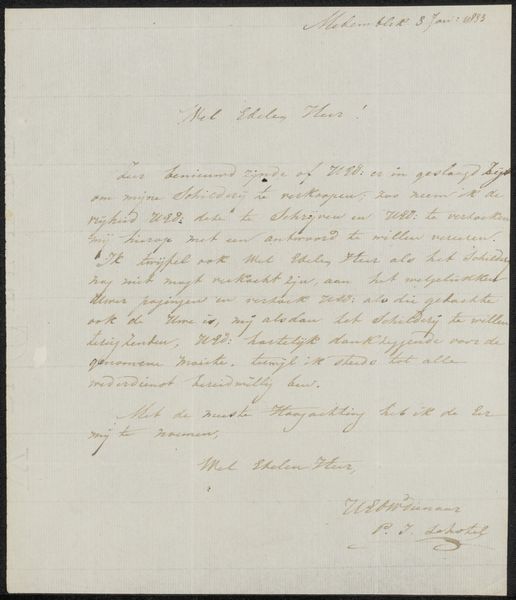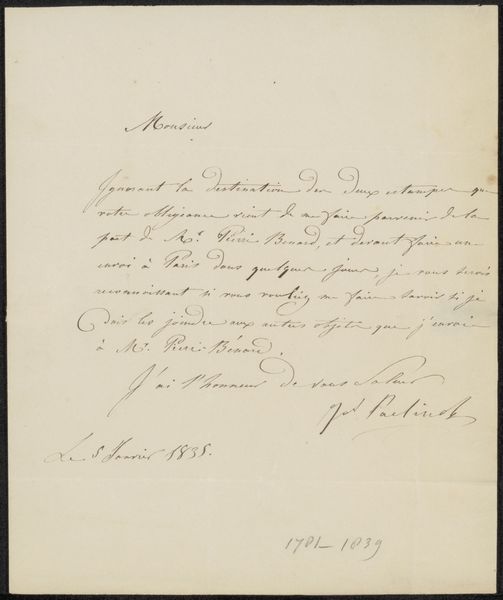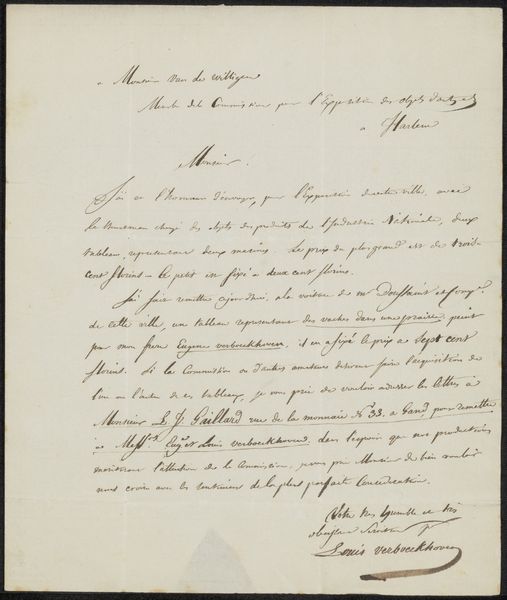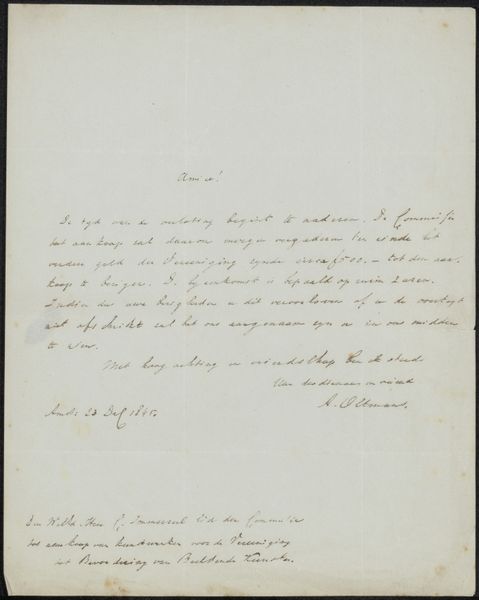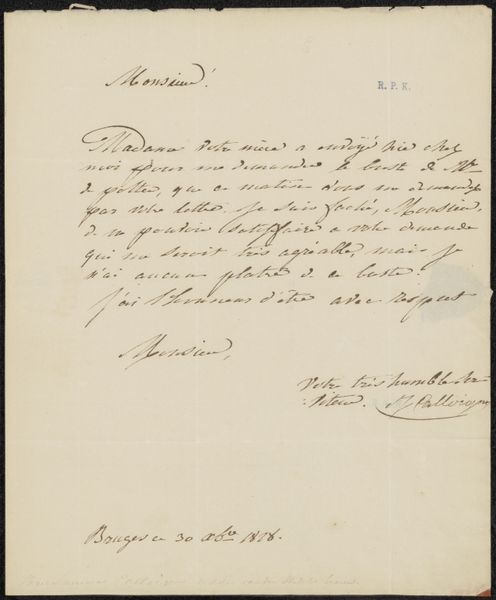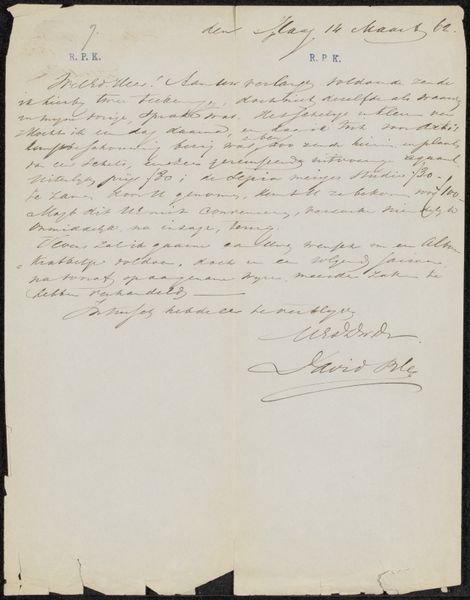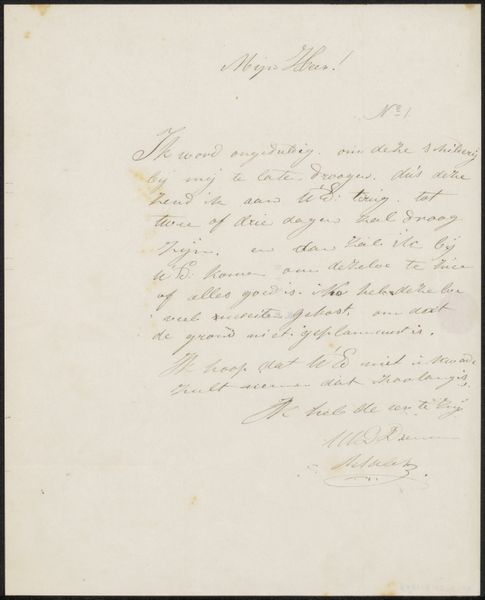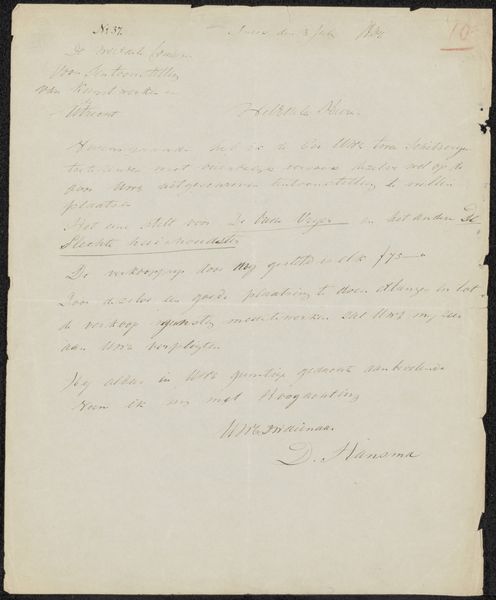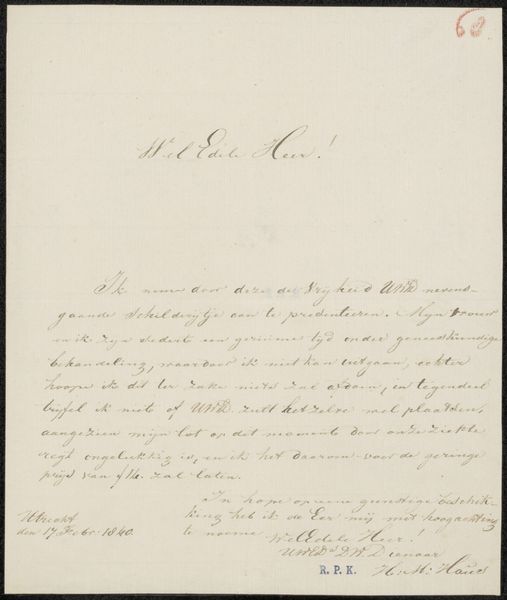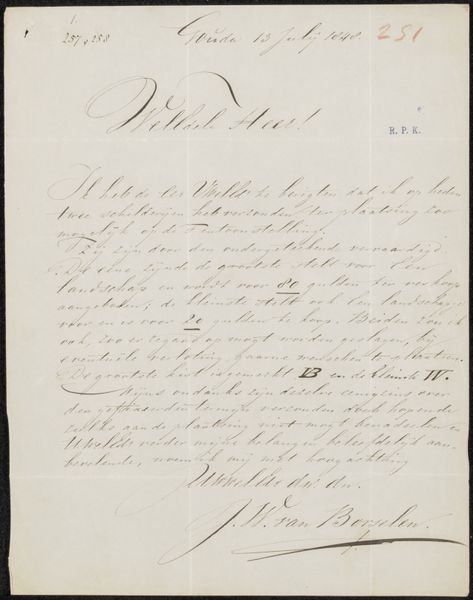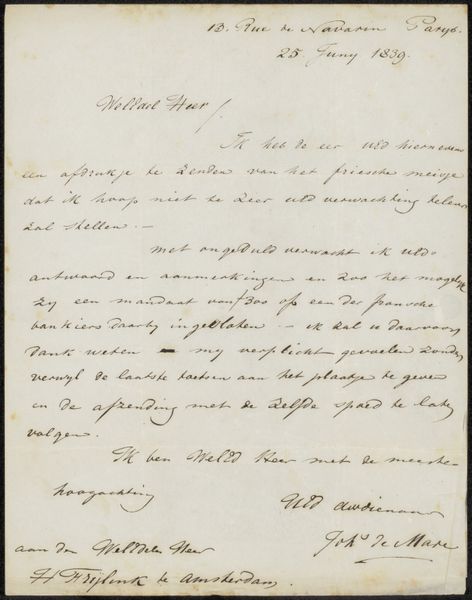
paper, ink, pen
#
portrait
#
paper
#
ink
#
romanticism
#
pen
#
calligraphy
Copyright: Rijks Museum: Open Domain
Editor: Here we have "Brief aan anoniem," or "Letter to Anonymous," created by Johannes Petrus Schouberg, sometime between 1840 and 1849. It’s ink on paper. Looking at this letter, I'm struck by the formal, almost impersonal, handwriting. How can we interpret a seemingly mundane object like a letter from this era? Curator: Well, consider the political climate of the 1840s. The Netherlands was still under a constitutional monarchy, but rumblings of democratic reform were growing. A letter, especially one addressed to an anonymous recipient, could be a form of subversive communication. The formality you observed might actually be a disguise. What kind of sentiments were deemed too dangerous to express openly? Editor: So, you’re suggesting the anonymity protects both the sender and receiver? It's a pre-digital form of encryption almost? Curator: Precisely. Think about who held power at the time, and whose voices were being suppressed. Were there specific reform movements Schouberg might have been involved in? The style of handwriting itself, the calligraphy, could offer clues too. Was this script reserved for official documents, or was it a common style? And how might social class play into literacy at the time? Editor: That gives me a lot to think about. I’d initially considered the letter from purely an aesthetic point of view, admiring the craft of the writing, but you’re framing it as a political object! Curator: Art doesn't exist in a vacuum. By interrogating its historical and social context, especially those that have been marginalized, we can unearth deeper understandings of both the artwork and ourselves. Hopefully, our perspective on history today enables us to view artworks such as this letter with a contemporary sensibility for those excluded from power. Editor: I agree. I’m seeing so many layers I hadn't noticed before. It really pushes the conversation forward when we view even the most commonplace of items through this kind of lens.
Comments
No comments
Be the first to comment and join the conversation on the ultimate creative platform.
